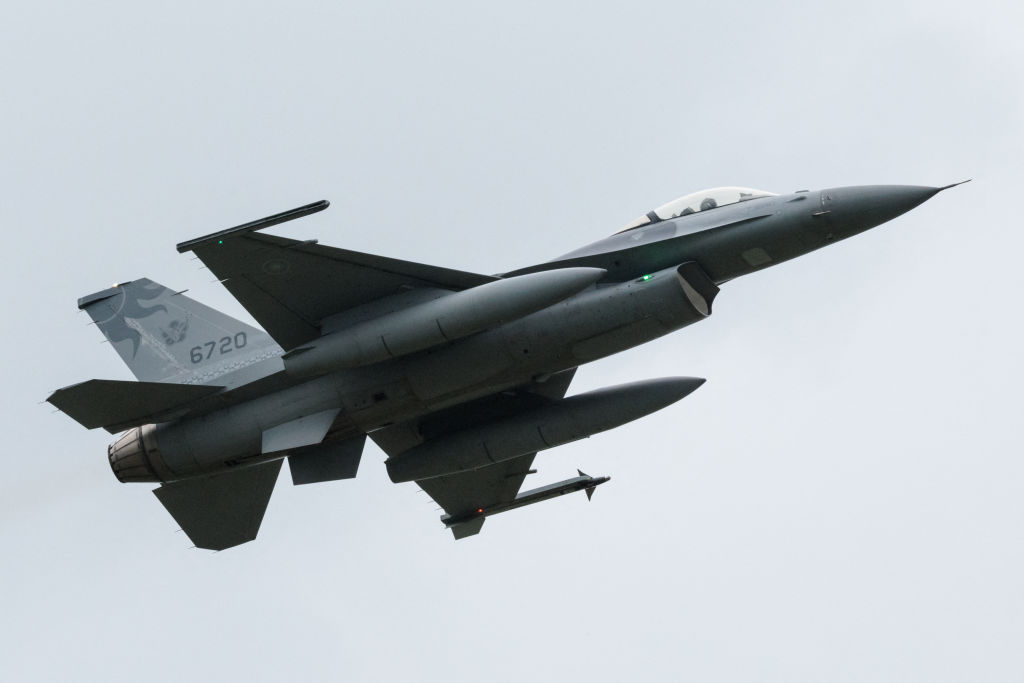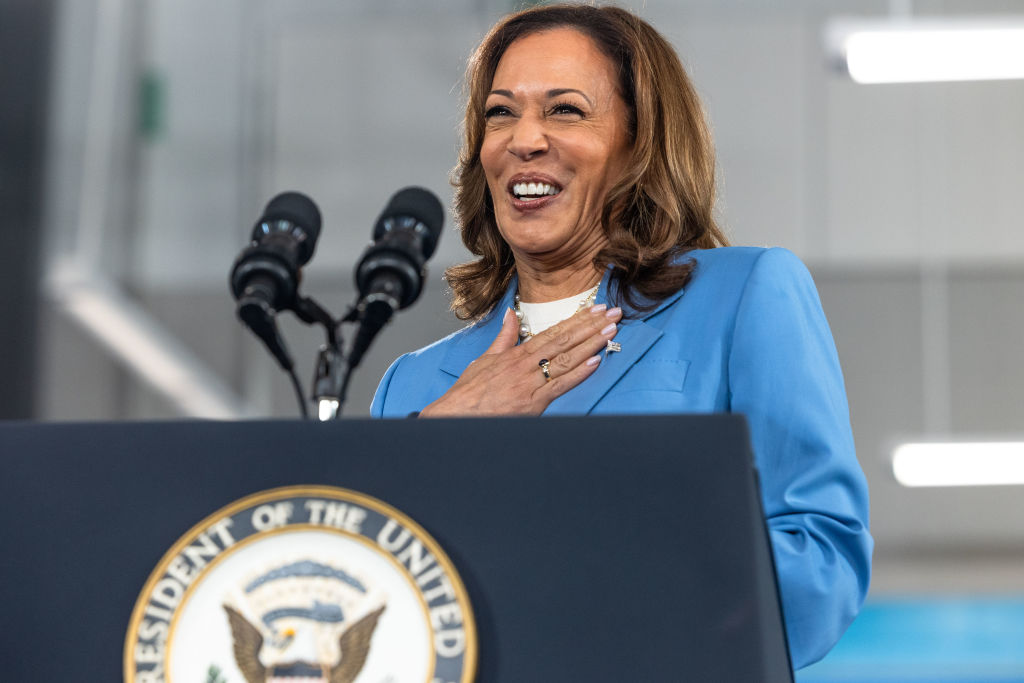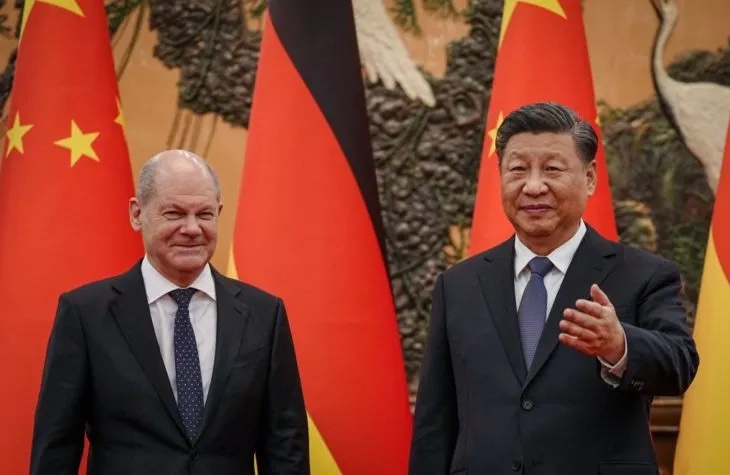For a second day, Friday, Chinese fighter jets and warships surrounded Taiwan for drills which the People’s Liberation Army said were designed to “test the ability to jointly seize power, launch joint attacks and occupy key areas.” They followed the inauguration earlier this week of Taiwan’s new and democratically elected president Lai Ching-te, who Beijing has characterized as a “dangerous separatist.” The exercises were a “strong punishment,” said the PLA, presumably for Taiwan’s audacity in electing a leader who wants to distance the island as far as possible from the thuggish leaders of the Chinese Communist Party.
There has been an assumption that Russia’s bogged-down assault on Ukraine might give the CCP pause for thought
China sent bombers towards the island in attack formations and carried out mock missile attacks in coordination with naval vessels, according to Chinese state media. For the first time the drills included the Chinese coast guard (which is bigger than most navies in the region), which carried out “law enforcement” drills — a euphemism for the harassment of regular ships bound for Taiwan. The drills were concentrated in five clusters, effectively surrounding the island, and also targeted smaller outlying islands controlled by Taiwan.
On Thursday, Taiwan’s ministry of defense recorded forty-nine Chinese aircraft, nineteen naval ships and seven coast guard vessels close to Taiwan’s territorial waters. It condemned the exercises as “irrational provocations, adding that the island has the “confidence and ability to protect national security.”
The drills were not unexpected. They have become almost routine, peaking when there is a political event — a high-profile visit to Taiwan or an election or inauguration — which is not to the CCP’s liking. But there is also a growing sense of frustration in Beijing’s militarised tantrums and its angry rhetoric, a realization that the island, which the CCP claims as its own and vows to take by force if necessary, is moving away from them. The CCP has never ruled Taiwan, historic claims are highly dubious and most Taiwanese have no desire to live under Beijing’s rule. Beijing’s intimidation will only strengthen that resolve, though military exercises — covered extensively in the Chinese media — are as much about President Xi Jinping playing up his nationalist credentials to a domestic audience as they are a signal to Taiwan or the West.
The latest drills will no doubt be studied by Western military analysts for clues about Beijing’s future intentions and its emerging military prowess — particularly its ability to coordinate different parts of its armed forces — the navy, air force, army and rocket force — which is one of the biggest challenges of modern warfare. Some have noted that seizing territory was a much bigger element of this week’s exercises than in previous drills, which had practiced for a blockade. That said, the drills appeared smaller than earlier encircling exercises and there was no live fire.
For all the breathless talk of occupying Taiwanese land, which accompanied this week’s drills, a full-on invasion remains an extremely difficult and unlikely task, at least in the short to medium term. Estimates vary but anything between 300,000 and 2 million combat troops, along with thousands of tanks, artillery pieces, rocket launchers and armored personnel carriers would need to cross the Taiwan Strait. It would be an operation of unprecedented size and complexity, and the preparations would be impossible to hide. Taiwan has important allies in the island’s geography and the climate of the Taiwan Strait. The coastal terrain has been described as a defender’s dream, with only fourteen beaches regarded as suitable for an amphibious landing. The treacherous waters and winds of the Taiwan Strait, known as heishuigou or the “Black Ditch” in local dialect, mean there are only two realistic windows for an invasion every year — late March to the end of April, or late September to the end of October.
This is why Beijing has resorted to “gray zone” warfare, combining military intimidation with economic, cyber, disinformation and other tactics falling short (often only just short) of the sort of conflict that might trigger an American response. Beijing could step this up by seizing an outlying island or beginning the inspection of ships heading to the island. Others have described this as an “anaconda strategy” — to slowly strangle the island. As one commentator put it on Chinese state television this week, “Taiwan’s economy is export-oriented, and most of its energy consumption relies on imports. Once besieged and blockaded, it can easily lead to economic collapse, turning it into a dead island. This exercise is focused on practicing a new mode of blockading Taiwan Island.” Such a scenario would of course have a devastating impact on the global economy, in which China itself has a significant stake.
Taiwan has responded with a new approach of its own, dubbed the “porcupine strategy,” which seeks to learn from the Ukraine war, making the island indigestible by investing heavily in small, mobile but highly lethal weapons systems. There has been an assumption that Russia’s bogged-down assault on Ukraine, and the relatively unified Western response to it, might give the CCP pause for thought over Taiwan. In fact, it seems to have accelerated efforts by Beijing to make its financial system more resilient against possible sanctions while generally putting the country on a more war-like footing. As the CCP continues its war games around Taiwan the most immediate danger is of miscalculation, with a small incident spiraling out of control.
This article was originally published on The Spectator’s UK website.


























Leave a Reply